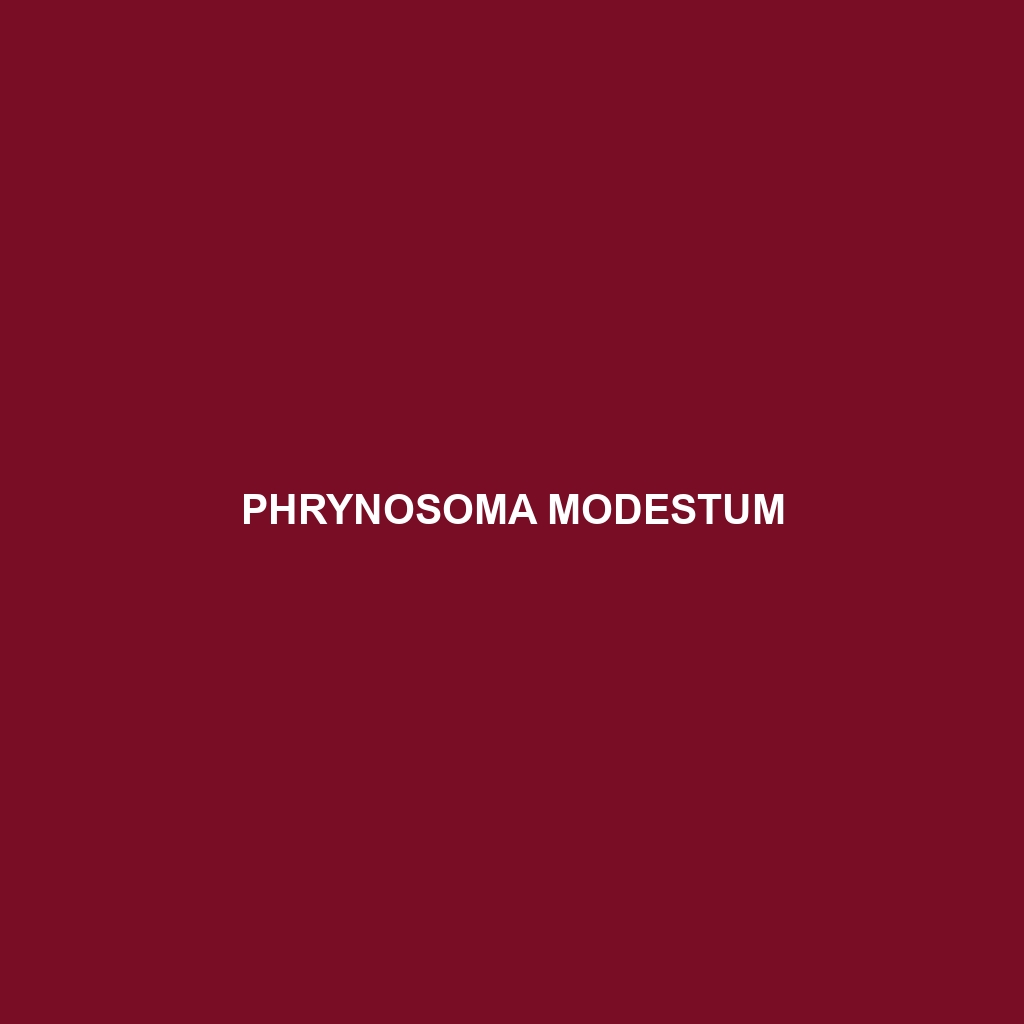Common Name
Phrynosoma modestum
Scientific Name
Phrynosoma modestum
Habitat
Phrynosoma modestum, commonly known as the modest horned lizard, primarily inhabits arid and semi-arid regions across North America, particularly in the central United States, including states like Texas, New Mexico, and Arizona. This species thrives in environments such as sandy plains, grasslands, and open scrublands, which feature a mix of grass and sparse vegetation. The habitat is characterized by a warm climate with relatively low precipitation, making it an ideal setting for the modest horned lizard. These lizards seek shelter beneath rocks, logs, or in burrows to escape the heat, demonstrating their adaptability to extreme environmental conditions.
Physical Characteristics
Measuring approximately 3 to 5 inches in length, Phrynosoma modestum is a compact lizard recognized for its distinctive flat, rounded body and short tail. One of its most notable physical features is the presence of distinct horn-like projections on its head, which serve as a form of defense against predators. The coloration of this species varies from sandy brown to grayish, allowing it to effectively blend into its surroundings—a trait that aids in camouflage. Additionally, Phrynosoma modestum has a series of smaller spines along its body that provide further protection against potential threats.
Behavior
The behavior of Phrynosoma modestum is primarily diurnal, with these lizards being most active during the day. They exhibit a fascinating adaptation known as “cryptic coloration,” which allows them to remain undetected from predators. When threatened, these lizards may puff up their bodies to appear larger or may employ a tactic of playing dead. Socially, they can be solitary or found in loose aggregates, especially during breeding seasons. Mating rituals typically occur in the spring, where males perform elaborate displays to attract females, including head-bobbing and chasing. Their ability to change positions and use the terrain to their advantage helps them evade predators effectively.
Diet
Phrynosoma modestum is primarily insectivorous, with a diet that mainly consists of ants, beetles, and other small invertebrates. During specific seasons, they may also consume plant material, which increases their dietary diversity. These lizards utilize their long, sticky tongues to capture prey, demonstrating an effective feeding strategy. Unlike some lizard species that are omnivorous, the modest horned lizard exhibits specialized feeding habits focused on hunting and capturing insects, with a significant portion of their diet comprising various ant species.
Reproduction
The reproductive cycle of Phrynosoma modestum typically begins in the spring, shortly after hibernation ends. Mating occurs from late March to early June, with females laying eggs in clutches of 5 to 20. The gestation period ranges from 30 to 50 days, depending on environmental conditions. Once the eggs are laid in soft, sandy soil, the young lizards emerge after approximately two months, ready to fend for themselves. Parental care is minimal, as the hatchlings are independent from birth, engaging in survival behaviors immediately. This reproductive strategy emphasizes rapid maturity, allowing them to populate their habitat quickly.
Conservation Status
Currently, Phrynosoma modestum is classified as “Least Concern” by the IUCN Red List, indicating that it faces no immediate threat of extinction. However, various factors, including habitat destruction due to agriculture, urbanization, and the use of pesticides, pose potential risks to their populations. Efforts to conserve their natural habitat and mitigate human impact are crucial for maintaining healthy populations of this unique species. Monitoring populations and protecting their environments are key steps in ongoing conservation efforts.
Interesting Facts
Phrynosoma modestum has several intriguing characteristics that set it apart from other lizard species. One unique adaptation is its ability to change body color slightly to match its environment, enhancing its camouflage. Additionally, this lizard can exhibit a remarkable defense mechanism known as “blood-squirting,” where it can shoot blood from its eyes as a way to deter predators—a feature that certainly draws attention. Moreover, its distinctive horns play a role not just in defense but also in attracting mates during the breeding season.
Role in Ecosystem
As an integral part of the ecosystem, Phrynosoma modestum serves both as a predator and prey, contributing to the ecological balance of its habitat. By controlling insect populations, particularly ants, these lizards play a vital role in managing the health of their environment. Furthermore, they serve as a food source for various larger predators, including birds of prey and mammals, thus positioning them within the food web. Overall, the modest horned lizard is pivotal in maintaining species diversity and ecosystem health in its native range.
